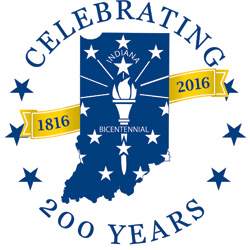An elementary school curriculum for exploring Hoosier history through the lens of Indiana State Parks’ development

Welcome to a series of curriculum units that explores Indiana’s history and its ties to Indiana’s beloved state parks. The Indiana State Parks system was established in 1916 as a centennial gift to Hoosiers, and our state parks’ story is Indiana’s story.
- Each unit includes ties to at least one of our properties; in most cases there are direct ties to two or more.
- Units are targeted to 4th graders and their study of Indiana history. But they can be adapted for use at any grade level or for informal education for Scouts or other groups.
- Each unit is correlated not only to State social studies standards but also to science and English/language arts standards.
- Each unit has assessment information, key concepts and vocabulary. Each unit has background information and a variety of resource links.
- Activities emphasize hands-on learning and include worksheets and a variety of media ranging from video to audio slideshow.
- Thanks to teachers, Ball State University history education staff and students, curriculum specialists in the Department of Education, staff at the Indiana History Bureau, and the Indiana Geological Survey for their review and support. Thanks also to the DNR Division of Communications for its assistance.
- Each Grade 3-5 classroom that completes lessons/activities from at least two of the curriculum units during the 2015-16 school year will receive a free one-day entrance pass to any Indiana State Park for each student in that classroom. Teachers must send a short report by students on their use of the units, along with a photo of the class participating in one or more of the activities. Send the verifying information to INStateParksHistory@dnr.IN.gov, along with the school address, and the one-day passes will be mailed to the school.
TECHNICAL NOTE: Depending on your web browser's settings, links in these PDFs may not work when viewed within the browser. For best results, download the PDFs to your computer and open them in Adobe Acrobat.
Units
- Lesson 1: Indiana’s Ancient Seas
- Lesson 2: Glaciers in Indiana
- Lesson 3: State Parks and Early Woodland Cultures
- Lesson 4: Indiana—Land of the Indians
- Lesson 5: Indiana After the American Revolution
- Lesson 6: From Forests to Farms and Towns
- Lesson 7: Conflict, War and Parks
- Lesson 8: Conservation Takes Hold: The Beginnings of Indiana’s State Parks System
- Lesson 9: Building Indiana State Parks — Civilian Conservation Corps (CCC) and Works Progress Administration (WPA)
- Lesson 10: State Parks after WWII
- Lesson 11: Putting Out the Welcome Mat
